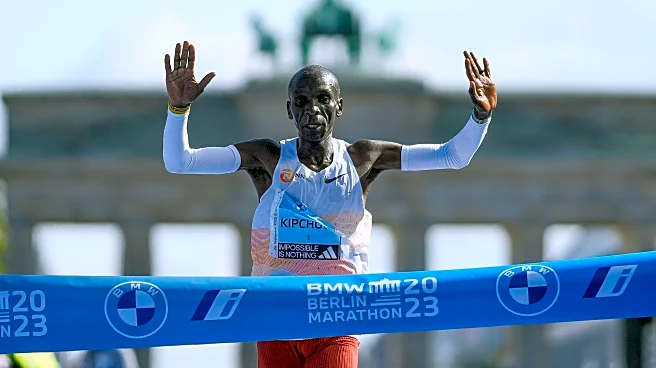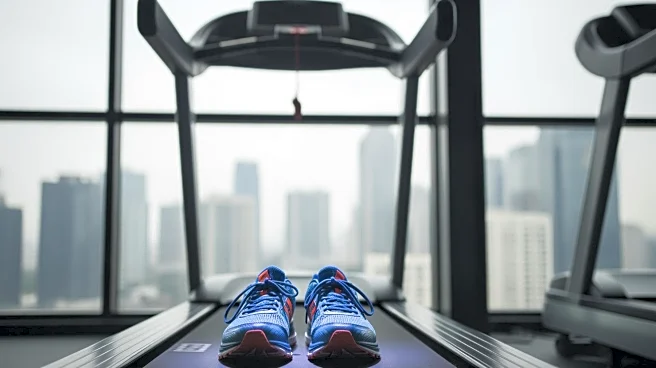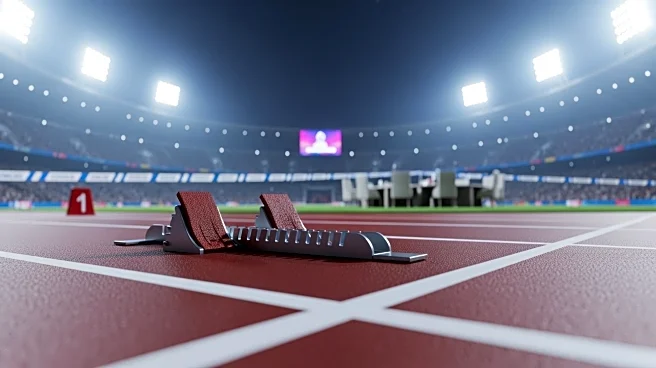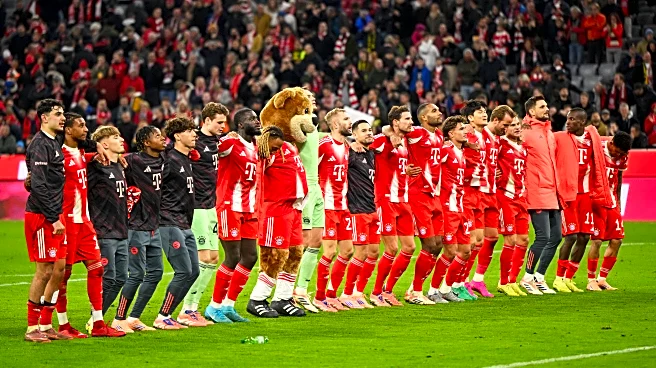What's Happening?
Koichi Kitabatake, a 91-year-old marathon runner from Yokohama, Japan, participated in the New York City Marathon, marking his third marathon of the year. Kitabatake, who began running marathons at the age
of 78, has completed 33 marathons since his first in Paris in 2012. Despite his age, he continues to challenge himself, having been the oldest runner at the 2022 London Marathon and the oldest finisher at the Sydney Marathon at age 90. Kitabatake's participation in the New York City Marathon is part of his ongoing commitment to staying active and healthy in his retirement years. His training regimen includes stretching and running several miles twice a week, although he limits pre-race runs to avoid injury.
Why It's Important?
Kitabatake's participation in the marathon underscores the potential for maintaining physical fitness and competitive spirit well into advanced age. His story serves as an inspiration for older adults, demonstrating that age does not necessarily limit one's ability to engage in demanding physical activities. This could influence public perceptions of aging and encourage more seniors to pursue active lifestyles, potentially impacting public health positively. Additionally, Kitabatake's achievements highlight the inclusivity of major sporting events like the New York City Marathon, which accommodate and celebrate athletes of all ages.
What's Next?
As Kitabatake continues to participate in marathons, he may inspire more nonagenarians to take up running, potentially leading to increased participation of older athletes in such events. His ongoing involvement in marathons could also prompt event organizers to consider additional support and recognition for older participants. Kitabatake himself aims to keep running as long as possible, focusing on listening to his body and maintaining his health.
Beyond the Headlines
Kitabatake's story raises questions about the societal and cultural perceptions of aging and athleticism. It challenges stereotypes about the physical capabilities of older adults and may contribute to a broader dialogue about aging and health. His achievements could also influence policy discussions around senior health and fitness programs, encouraging more investment in initiatives that promote active aging.












